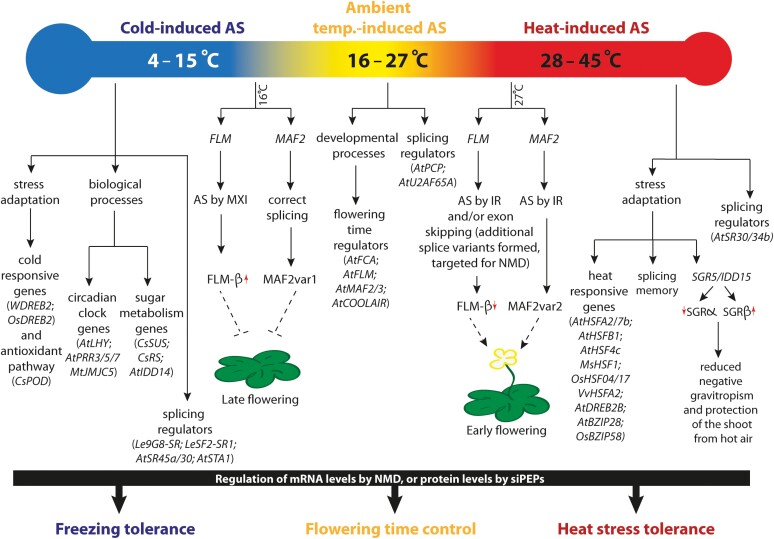Fig. 3.
Temperature-induced alternative splicing (AS) under different temperature conditions resulting in the plant’s adaptation. Overview of the genes undergoing AS under diverse temperature regimes like cold (around 4–15 °C), changes in ambient temperature (16–27 °C), and heat stress (28–45 °C), and the resulting physiological responses. AS in response to changes in temperature (including extreme temperatures) has been shown to play an important role in improving plant performance and stress tolerance. As an example, AS of the flowering time genes FLM and MAF2 in response to a change in ambient temperature regulates the transition to flowering and reproductive growth in plants. A higher ambient temperature (27 °C) induces flowering while a lower temperature (16 °C) represses flowering. Dashed lines indicate indirect responses. The red arrows indicate up-regulation (upward arrow) or down-regulation (downward arrow). IR, intron retention; MXI, mutually exclusive incorporation; NMD, non-sense mediated decay; siPEPs, small interfering peptides.

